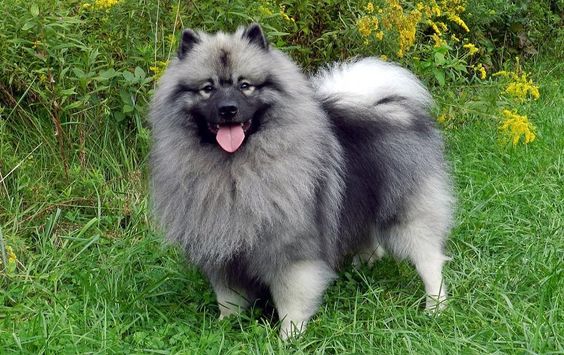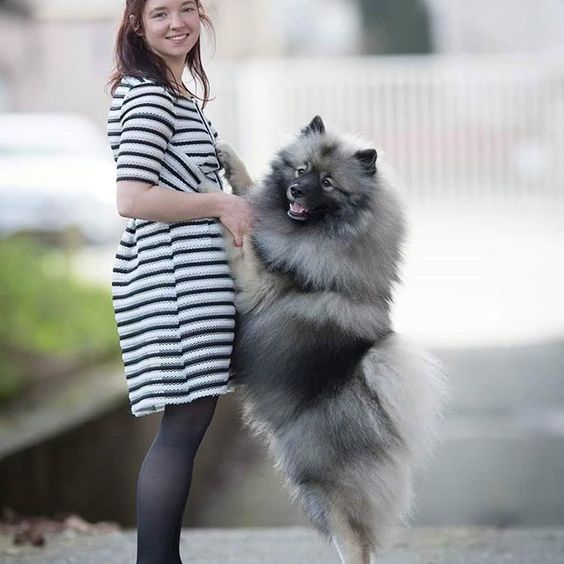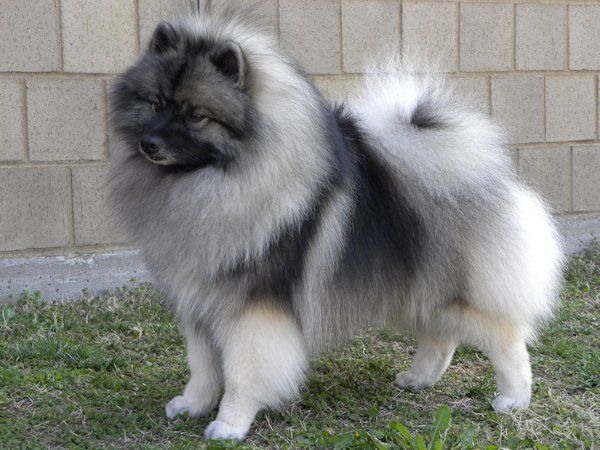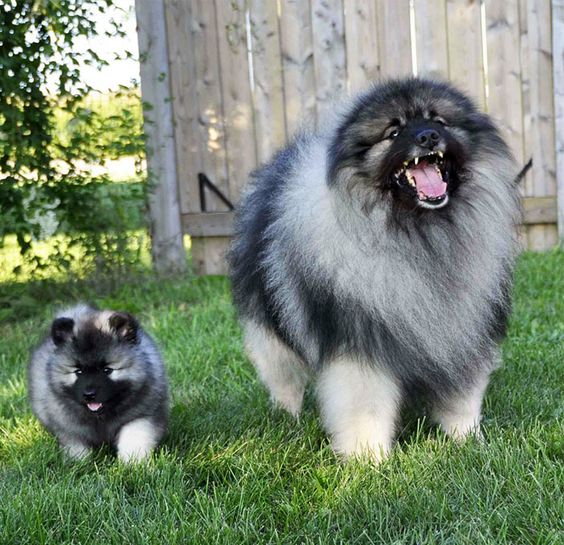Are you looking for a furry friend who can be your constant companion, and you don’t have too many people around? Look no further than the Dutch Keeshond Dog. This breed is known for its affectionate nature, and they thrive in small homes with few people.

What is a Dutch Keeshond Dog?
A Dutch Keeshond Dog, also known as a Dutch Barge Dog or Smiling Dutchman, is a medium-sized dog breed that originated from the Netherlands. They were originally bred to be watchdogs on barges in the 17th and 18th centuries. These dogs were loyal and protective of their owners and quickly gained popularity amongst the working class in Holland.
The Dutch Keeshond Dog has a distinct wolf-like appearance with a thick, double-layered coat in shades of gray, black, and cream. Their alert eyes and expressive face give them an almost human-like quality. They weigh between 35-45 pounds and stand around 17 inches tall at the shoulder.
Personality and Temperament
One of the most endearing qualities of a Dutch Keeshond Dog is their friendly, playful, and affectionate nature. They are known as “velcro dogs” because of their tendency to stick close to their owners. These dogs are highly intelligent and enjoy learning new things, making them easy to train.

However, their loyalty and protectiveness can sometimes come across as possessiveness, which makes socialization and training essential from an early age. Despite their friendly personality, they make excellent watchdogs and will not hesitate to bark and alert their owners if someone unfamiliar approaches their territory.
Caring for a Dutch Keeshond Dog
Dutch Keeshond Dogs have a thick double coat, which means they require regular grooming to keep their fur healthy and free from tangles. Weekly brushing will help to distribute their natural oils and prevent mats from forming. These dogs shed moderately throughout the year, and they have a seasonal shedding period where they shed their undercoat.
They are an active breed and require daily exercise to keep them happy and healthy. This can include walks, runs, hikes, or even swimming. Mental stimulation is also important for this intelligent breed, so puzzle toys or training sessions are great ways to keep their minds busy.
How to Use Dutch Keeshond Dog – Lovely Single Dog with Few People

If you’re looking for a dog that is loyal, affectionate, and doesn’t require too much space, then a Dutch Keeshond Dog might be the perfect fit for you. They are excellent companions for individuals or families living in small homes with few people around.
These dogs thrive on human companionship and prefer to be around their owners, making them ideal for someone who works from home or has a flexible schedule. They do not do well being left alone for long periods, so if you’re away from home often, it’s best to consider a different breed.
Examples of Dutch Keeshond Dogs as Perfect Companions
One example of a Dutch Keeshond Dog being an ideal companion is when an elderly couple lost their beloved dog due to old age. They were looking for a dog that was smaller in size but still had a friendly personality. After some research, they discovered the Dutch Keeshond Dog and decided to adopt one. The dog quickly became their constant companion and brought joy back into their lives.
Another example is a family of four living in an apartment building with few neighbors and no backyard. They wanted a dog that could be comfortable in a small space while still being affectionate and playful. They found out about the Dutch Keeshond Dog’s nature and decided to adopt one. The dog became a source of happiness, especially for the kids, who enjoyed playing with him.
Comparing Dutch Keeshond Dog to Other Breeds
When compared to other breeds, the Dutch Keeshond Dog stands out for its friendly nature and loyalty. They are not as high maintenance as some of the other medium-sized breeds, making them perfect for someone who wants a furry friend but doesn’t have too much time to spare for grooming or exercise.
They are similar to other breeds like Pomeranians or Shiba Inus in terms of size and energy level but differ in their sociability. Dutch Keeshond Dogs prefer to be around their owners and are not as friendly towards strangers, while Pomeranians and Shiba Inus tend to be more independent and aloof.
Advises for Owning a Dutch Keeshond Dog
Before adopting a Dutch Keeshond Dog, it’s essential to keep in mind that they require consistent training and socialization. Their loyalty can sometimes come across as possessiveness, which can lead to behavioral issues if not addressed early on.
It’s also important to note that these dogs do not do well being left alone for long periods. If you’re away from home often, it’s best to consider a different breed. They thrive on human companionship and can become destructive or anxious if left alone for too long.

Another important aspect to consider is their grooming needs. Their thick double coat requires regular brushing to prevent mats from forming and to keep their fur healthy. They shed moderately throughout the year and have a seasonal shedding period where they shed their undercoat. If you’re not prepared to commit to regular grooming, then this breed may not be the best fit for you.
Lastly, it’s crucial to provide them with enough exercise and mental stimulation. Daily walks, runs, or hikes alongside training sessions or puzzle toys will help keep their minds and bodies active. Neglecting their exercise and mental stimulation needs can lead to boredom, which can result in destructive behavior.
Conclusion
In conclusion, the Dutch Keeshond Dog is a perfect furry companion for individuals or families living in small homes with few people around. They are loyal, affectionate, and easy to train, making them ideal for someone who wants a furry friend but doesn’t have too much time to spare for grooming or exercise. However, it’s essential to keep in mind their socialization, grooming, and exercise needs before adopting one. With proper care and attention, these dogs can bring immense joy and happiness into your life.